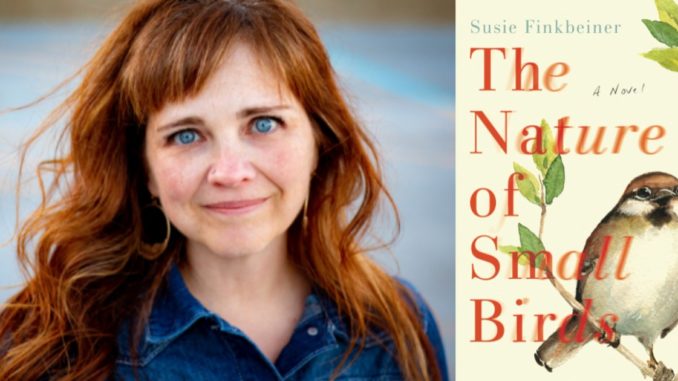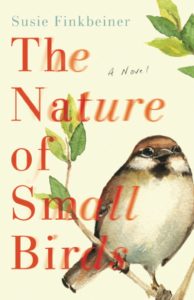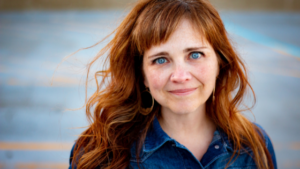
Podcast: Play in new window | Download
Subscribe: Apple Podcasts | RSS
Susie Finkbeiner is a Life is Story favorite! A few months ago, we had the opportunity to sit down with her and talk about The Nature of Small Birds. It’s a beautiful, relational story told over the course of three different time frames.
The Interview | Susie Finkbeiner
This excerpt has been lightly edited for clarity.
Josh Olds: First thing that I like to do this for fiction writers in particular, at the start of the podcast, just begin by giving us your elevator pitch for the book.
Susie Finkbeiner: Well, this story is the story of the events surrounding the adoption of 3000 children from Vietnam at the end of the United States involvement in, in the Vietnam War, and is the story of one of the families that adopted a little girl.
I find that birds make good metaphors for fiction. – Susie Finkbeiner
Josh Olds: Tell me about the title. I remembered vaguely that it was going to be about adoption. That was about it. And so, when I saw the title, I purposefully from there on out, tried to not know anything about the book until I had the advanced copy in my hands and I could read it. I did not know where the title was going. It ends up being this really beautiful metaphor. What was the process and coming up with the title?
Susie Finkbeiner: Well, you know, I am a tiny bit bird obsessed. I’m a bird nerd in my personal life. I find that birds make good metaphors for fiction. I was just thinking about how birds fledge and they cannot stay in the nest. And it’s their nature to grow up and leave. And often with these birds, they leave and never come back. Fortunately, with humans, that’s not usually the case. But I just thought that was such a metaphor for letting go.
And I remember, last spring, I was watching a bird, a fledgling, and its mother nudged it out of the nest. That mama bird knows that’s what’s supposed to happen. Sometimes as parents, it’s hard for us to remember our kids—we raised them so that they will fly and have their lives. And so that’s kind of where the workings of that metaphor began in my mind.
Josh Olds: And how does that play out throughout the book?
Susie Finkbeiner: Well, you know, I realized, as I was writing it—this book is set in three different timelines. So in 1975, in 1988, and 2013, and in each of the timelines, the point of view, for that specific era, is learning how to let go of something, maybe it’s expectations, or it’s letting go of your childhood so you can grow up. Or it’s, it’s realizing that you have to let go of your parents even at some point, as well as your children. And life is—life is a series of letting go and allowing the nature that God created in all of us to play out.
The Book | The Nature of Small Birds
 In 1975, three thousand children were airlifted out of Saigon to be adopted into Western homes. When Mindy, one of those children, announces her plans to return to Vietnam to find her birth mother, her loving adopted family is suddenly thrown back to the events surrounding her unconventional arrival in their lives.
In 1975, three thousand children were airlifted out of Saigon to be adopted into Western homes. When Mindy, one of those children, announces her plans to return to Vietnam to find her birth mother, her loving adopted family is suddenly thrown back to the events surrounding her unconventional arrival in their lives.
Though her father supports Mindy’s desire to meet her family of origin, he struggles privately with an unsettling fear that he’ll lose the daughter he’s poured his heart into. Mindy’s mother undergoes the emotional rollercoaster inherent in the adoption of a child from a war-torn country, discovering the joy hidden amid the difficulties. And Mindy’s sister helps her sort through relics that whisper of the effect the trauma of war has had on their family–but also speak of the beauty of overcoming.
Told through three strong voices in three compelling timelines, The Nature of Small Birds is a hopeful story that explores the meaning of family far beyond genetic code.
The Author | Susie Finkbeiner
 Susie Finkbeiner is a story junkie. Always has been and always will be. It seems it’s a congenital condition, one she’s quite fond of.
Susie Finkbeiner is a story junkie. Always has been and always will be. It seems it’s a congenital condition, one she’s quite fond of.
After decades of reading everything she could get her hands on, Susie realized that she wanted to write stories of her own. It takes years to grow a writer and after decades of work, Susie realized (with much gnashing of teeth and tears) that she was a novelist. In order to learn how to write novels, she read eclectically and adventurously. After reading the work of Lisa Samson, Patti Hill, and Bonnie Grove she realized that there was room for a writer like her in Christian fiction.
Her first novels Paint Chips (2013) and My Mother’s Chamomile (2014) have contemporary settings. While she loved those stories and especially the characters, Susie felt the pull toward historical fiction.
A Cup of Dust: A Novel of the Dust Bowl (2015), Finkbeiner’s bestselling historical set in 1930s Oklahoma, has been compared to the work of John Steinbeck and Harper Lee (which flatters Susie’s socks off). Pearl’s story continues with A Trail of Crumbs: A Novel of the Great Depression (2017) and A Song of Home: A Novel of the Swing Era (2018).
What does she have planned after that? More stories, of course. She’s a junkie. She couldn’t quit if she wanted to.
